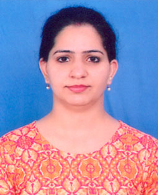A REVIEW ON JANPADODHWANSA - CONCEPT OF ANNIHILATION IN AYURVEDA
Abstract
Janpadodhwansa is one among the unique concept described in Ayurveda treatises which literally means demolition or annihilation of people or community. There are four factors that has been described which are common and essential for every living being i.e. Vayu (air), Jala (water), Desha (land) and Kaala (season). Any abnormal alteration in these four factors can significantly influence individual or community or environment or all of them together. Vitiation of these four common factors is the cause for Janpadodhwansa. Foremost reason for Janpadodhwansa has been described as Adharma (immorality) and the root cause of Adharma is said to be Prajnaparadha (delinquency of wisdom). Considering the noteworthiness of Janpadodhwansa, a whole chapter has been depicted in Charak Samhita illustrating its onset, causes, peculiar features and management. On the basis of characteristics features of vitiated four factors in Ayurveda classics, catastrophe conditions like cyclones, earthquakes, endemic/epidemic or pandemic disease outbreak etc., may simulate with Janpadodhwansa. Restrained utilisation of natural, man-made resources, adoption of Ayurveda dietetics and lifestyle, Panchakarma therapies, Rasayana therapies may effectively contribute to prevent and manage these situations especially like disease outbreak. This review article primarily focussed on the need of understanding the topic of Janpadodhwansa in current scenario.

Copyright (c) 2020 International Journal of Ayurveda and Pharma Research

This work is licensed under a Creative Commons Attribution-NonCommercial-ShareAlike 4.0 International License.


